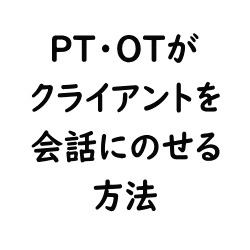目次
背筋群のトレーニングは脊椎アライメントの改善に有効か?
脊椎圧迫骨折例をはじめ円背姿勢の高齢者を対象に背筋群のトレーニングを行う機会って多いと思います.
でも背筋群のトレーニングを継続することで本当に脊椎アライメントを改善することが可能なのでしょうか?
今回は背筋群のトレーニングは脊椎アライメントの改善に有効かを明らかにした論文をご紹介させていただきます.

今回ご紹介する論文
Physical Therapy Research/Advance online publication/Article overview
Effects of back extensor strengthening exercises on postural alignment, physical function and performance, self-efficacy, and quality of life in Japanese community-dwelling older adults: A controlled clinical trial
Atsumi FUKUDA, Eiki TSUSHIMA, Kanichiro WADA, Yasuyuki ISHIBASHI
Article ID: E10013
今回ご紹介する論文は先日公開されたばかりの日本理学療法士協会の英文誌に掲載された内容です.
研究の目的
Objective: To examine the changes in postural alignment and kyphosis-correlated factors after 6 months of back extensor strengthening exercise in a group of community-dwelling older adults aged ≥65 years.
この研究では65 歳以上の地域居住高齢者を対象に,背筋強化運動を 6 ヶ月間実施した後の姿勢アライメントおよび前弯関連因子の変化を調査することを目的としております.
研究の方法
Methods: We quasi-randomized 29 subjects into an intervention group treated with a back extensor strengthening program and a control group treated with a full-body exercise program. These groups completed 20-30 minutes of exercise directed by a physical therapist one or more times per week and were instructed to exercise at home as well. The participants were assessed prior to and after the intervention using the following criteria: postural alignment of “usual” and “best” posture, physical function, physical performance, self-efficacy, and quality of life. The differences between two factors (group and period) were compared for each of the measurement variables.
29名の対象者を,背筋強化プログラムを実施した介入群と全身運動プログラムを実施した対照群に準無作為に割り付けております.
介入群は週に1回以上,理学療法士の指示による20~30分の運動を行い,自宅でも運動を行うように指導されております.
介入の前後で以下の基準を用いて評価が行われております.
アウトカムについては安楽姿勢および最良姿勢のアライメント,身体機能,身体能力,自己効力感,および生活の質となっております.
測定変数のそれぞれについて,2つの因子(群と期間)間の差を比較しております.
研究の結果
Results: Subjects who adequately completed the exercises were analyzed. A reduced knee flexion angle was noted in the “best” posture of both groups, as were improved physical function and performance with the exception of one-leg standing time. Verifying the effect size in the post-hoc analysis, the body parts that showed changes to postural alignment after the intervention differed between groups.
エクササイズを適切に完了した対象者を分析しております.
両群の最良姿勢では,片足立位時間を除いて身体機能とパフォーマンスが改善され,膝の屈曲角度の低下が認められております.爾後分析で効果の大きさを確認したところ,介入後に姿勢アライメントに変化を示した身体部位はグループ間で異なっておりました.
研究の結論
Conclusions: Back extensor strengthening exercises improved physical function and performance, but did not improve spinal alignment. The changes due to these interventions were not significantly different from changes observed in the full-body exercise group. However, post-hoc analysis revealed that the effect size of posture change was different, possible indicating that the two groups experienced different changes in the postural alignment.
背筋強化エクササイズは身体機能とパフォーマンスを改善しましたが,脊椎のアライメントは改善しませんでした.
また背筋強化プログラム介入による変化は,全身運動群で観察された変化と有意差はありませんでした.
しかし事後分析の結果,姿勢変化の効果の大きさが異なることが明らかになり,2つのグループが異なる変化を経験したことを示している可能性があります.
今回は背筋群のトレーニングは脊椎アライメントの改善に有効かを明らかにした論文をご紹介させていただきました.
残念ながら明らかな介入効果は示されておりませんが,姿勢アライメント変化が介入群と対照群で異なることから,姿勢アライメントの改善を目的とした背筋強化プログラムは何らかの意味はありそうですね.







コメント